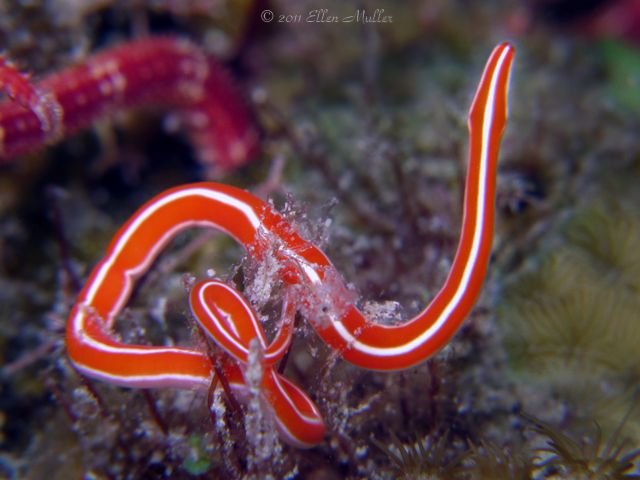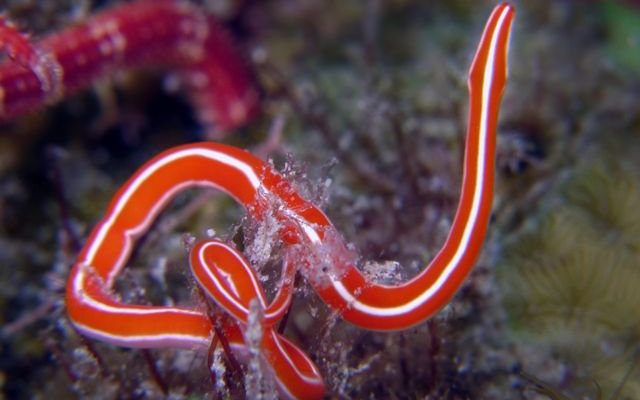
Think of ribbon worms like the hidden players in a vast ocean game. At first glance, they might seem like benign residents, but beneath their soft, elongated bodies lies a set of skills that could disrupt the balance of their underwater ecosystems. So, are they just misunderstood, or do they pose a real threat? Let’s unravel this together over our virtual coffee.
What Exactly Are Ribbon Worms?
Ribbon worms, scientifically known as **Nemertea**, are a diverse group of soft-bodied invertebrates. Found in oceans worldwide, these worms can vary greatly in size, color, and habitat preference. Some species can grow to impressive lengths, reaching up to 30 feet! Yup, you read that right—a worm that long! They are typically flat and ribbon-like, which is where they get their name.
These worms mostly thrive in marine settings but can also be found in freshwater environments. They prefer sandy or muddy substrates, often hiding in crevices or burrows, waiting for their next meal. As we go deeper, you might be wondering—how do these creatures affect other marine life?
Feeding Habits of Ribbon Worms
Ribbon worms are **predators** in their ecosystems, feeding mainly on small fish, crustaceans, and other marine invertebrates. They use a unique strategy called **proboscis** extension to catch their prey. This means they can shoot out a specialized feeding organ, often hooked or sticky, to snag unsuspecting animals.
– **Prey Capture:** When they sense potential meals nearby, ribbon worms can launch their proboscis with impressive speed. The prey is then held secure, making escape quite difficult.
– **Digestion:** Once captured, the prey is drawn into the worm’s body for digestion. Here’s the thing: this method isn’t just effective; it can impact local fish populations, especially if a heavy ribbon worm presence is reported.
What does this mean for other marine life? Honestly, it can create competition for food sources, pushing smaller fish and invertebrates to either adapt or risk being eaten.
Ecological Impact on Marine Life
You might be wondering how ribbon worms fit into their marine environment. Their predatory behavior can influence the population dynamics of other species. When ribbon worms are abundant, local fish populations may decline, leading to a ripple effect throughout the ecosystem.
For example:
– **Decline of Small Fish:** As ribbon worms feast on young fish, it diminishes the number of adults that can reproduce. This creates a gap for other fish species that rely on those younger fish for food.
– **Ecosystem Balance:** Every creature has a role to play; ribbon worms influence the population of their prey, contributing to the healthy balance of life underwater. However, if they become too numerous, they could disrupt that balance.
Let me explain what could happen if ribbon worms overpopulate. Their presence can result in fewer small fish, which could lead to an increase in algae growth, as there are fewer fish to feed on them. It’s like a game of dominos; one piece falls, and soon everything is affected.
A Defense Mechanism: Are Ribbon Worms Dangerous?
One interesting feature of ribbon worms is their ability to protect themselves. Many species possess **toxins** or **sticky substances** that can deter predators. For example, when threatened, some ribbon worms can secrete a thick, mucous-like substance that can be unappealing for would-be predators.
– **Toxicity:** Some types of ribbon worms contain **toxins** that can harm or even kill predators, including fish. This means not only can they capture their prey effectively, but they can also defend themselves from threats.
– **Impact on Predators:** The presence of these toxins affects which species can thrive in a given area. Predator fish may avoid hunting ribbon worms altogether if they associate them with their harmful effects.
In a sense, ribbon worms hold a double-edged sword. They’re not only capable of upending the populations of their prey but also capable of defending themselves robustly against their natural enemies.
Are Ribbon Worms Harmful to Humans?
Typically, ribbon worms aren’t a direct threat to humans. Their habitats are usually far from where people generally swim or fish. However, caution should be exercised when handling them, as some species can cause mild irritation if touched.
– **Toxic Reactions:** For those with sensitive skin, touching a ribbon worm might result in a rash or minor irritation. It’s always better to observe these fascinating creatures from a distance.
– **Ecological Caution:** If you’re an enthusiast for marine activities, it’s vital to respect the habitats of ribbon worms and other marine life. Disturbing their environment can lead to unforeseen ecological consequences.
So, while they might not bite back like some sea creatures, it’s best to admire them from afar!
In summary, ribbon worms can indeed pose a threat to other marine life, primarily through their predatory habits and their ability to impact ecological balance. Their unique adaptations and roles in the ecosystem can create both challenges and opportunities for marine biodiversity.
Understanding these creatures helps us appreciate the complex web of life in our oceans. While they might seem slimy and a bit unsettling, ribbon worms contribute significantly to their ecosystems. So, next time you hear about ribbon worms, remember that they are not just dangerous predators—they’re essential components of the marine world.
As we continue to explore the wonders of the ocean, let’s keep our curiosity alive and respect the intriguing interactions that unfold beneath the waves. After all, every creature plays its part in the grand tapestry of life!

